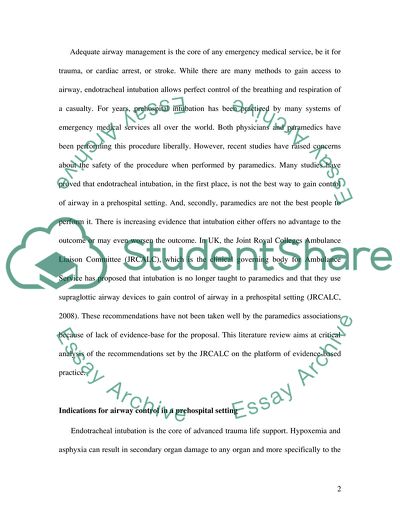Cite this document
(Prehospital Intubation as a Common Intervention in Emergency Research Paper, n.d.)
Prehospital Intubation as a Common Intervention in Emergency Research Paper. Retrieved from https://studentshare.org/nursing/1721185-intubation-still-the-gold-standard-for-paramedics-in-the-pre-hospital-setting
Prehospital Intubation as a Common Intervention in Emergency Research Paper. Retrieved from https://studentshare.org/nursing/1721185-intubation-still-the-gold-standard-for-paramedics-in-the-pre-hospital-setting
(Prehospital Intubation As a Common Intervention in Emergency Research Paper)
Prehospital Intubation As a Common Intervention in Emergency Research Paper. https://studentshare.org/nursing/1721185-intubation-still-the-gold-standard-for-paramedics-in-the-pre-hospital-setting.
Prehospital Intubation As a Common Intervention in Emergency Research Paper. https://studentshare.org/nursing/1721185-intubation-still-the-gold-standard-for-paramedics-in-the-pre-hospital-setting.
“Prehospital Intubation As a Common Intervention in Emergency Research Paper”, n.d. https://studentshare.org/nursing/1721185-intubation-still-the-gold-standard-for-paramedics-in-the-pre-hospital-setting.


